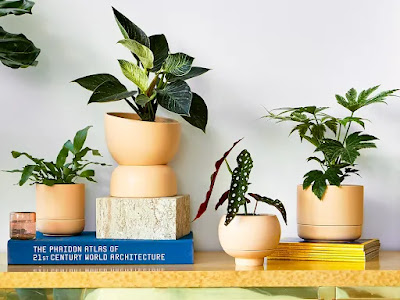Outdoor Plant Pots: Add Greenery to Your Balcony, Patio or Backyard
 |
| source: pexels.com |
Are you looking for planters for your garden or balcony? The market is so rich in various designs, sizes and materials, that you can easily get overwhelmed. Some materials such as concrete are great for windy climates. Others, such as plastic are affordable and come in all colours you can think of. Here's how to choose your outdoor plant pots.
Types of Outdoor Planters
For Balconies
Outdoor pots are a great addition to any deck or balcony, providing a nice touch to these areas. These planters often come with brackets for hanging on a railing or handrail. They can also be suspended from the ceiling using a rope or chain, known as hanging planters.
The purpose of these containers is to bring life to every corner of your home. They are typically filled with annual or biennial flowers, but can also be used for planting perennials to create a green backdrop. Perennials stay year-round, while annuals and biennials can be changed seasonally.
• Consider the type of bracket you need, especially if you share a building. Opt for brackets with a locking system to secure your planter in place.
• To avoid water spillage, consider getting a drip tray for your planter. Some planters come with watering systems, which can be convenient if you tend to forget to water your plants.
Keep in mind that hanging planters may not be suitable if you live in a high-rise building or if your balcony is exposed to strong winds. This can cause damage to your planter or even knock it over.
Flower Pots
These plant containers are specifically created for clusters of plants or a single medium-sized shrub, and they are generally larger than typical plant pots (ranging from 40 cm to a meter in height). Flower outdoor plant pots can have a rectangular or square shape and are constructed using materials such as wood, resin, or even concrete, as long as they have drainage holes at the bottom.
Vegetable Grids
Vegetable grids are typically crafted from wood and are spacious enough to accommodate various types of vegetable crops. They can have an open design, allowing them to be placed directly on the soil with only their walls keeping the soil intact.
Raised Beds
If you're interested in gardening, these raised bed models are perfect for avoiding back pain. They're great for creating a small vegetable garden on a balcony. These are also great if you want to protect your plants from pests. This way everything you plant will not be easily reached by hungry snails.
Planters With Peroglas
If you're looking to cultivate a climbing plant like a clematis, consider using a raised bed with a pergola or trellis. With a rectangular raised bed, you can typically accommodate up to three plants; double that with two raised beds for even more planting space. Watch as the stems of your climbing plants gracefully wind around the trellis or pergola, creating a stunning visual show.
Materials and Plants
 |
| source: pinterest.com |
Concrete
Concrete planters are made by mixing cement paste with water, sand, and rock to create a solid structure. To enhance its strength and durability, various chemicals like calcium, silicon, aluminium, and iron are added during the manufacturing process. Once the concrete mixture is ready, it is poured into moulds to achieve the desired shape. By default, concrete planters have a light grey colour. However, you can easily add a pop of colour to them by using masonry paint. This allows you to customize your planters in any shade you prefer.
Fibreglass
Fibreglass planters are highly favoured by developers and landscapers due to their modern and innovative nature. The process of making these planters involves spinning glass into fibres and combining them with resin to form a durable and flexible composite. Once the fibreglass and resin mixture is ready, it is poured into moulds of different shapes and sizes. After a few rounds of sanding and a layer of primer, the fibreglass planter is given a flawless and protective finish. To ensure proper drainage, holes can be drilled into the bottom of the planter.
Plastic Containers
Plastic is one of the most widely produced materials in history due to its affordability. It can be easily shaped into various forms and styles. The typical plant pot found in supermarkets is made of plastic. Plastic's popularity stems from its high strength-to-weight ratio. This allows plastic pots to be lightweight, durable enough to withstand shipping across long distances, and resilient even after being dropped multiple times.
Consider the Right Soil
For optimal plant health, make sure to choose a potting mix that is certified by Australian Standards. Refresh your plants with a new potting mix every couple of years, and consider moving them to a slightly larger pot. To minimize watering needs, consider adding water-retaining crystals when planting, especially for plants in sunny locations. Mulch is another great way to retain moisture and give your plants a polished appearance.
Finish off by adding gravel, crushed shells, decorative pebbles, or organic mulch around the base of your plants.



Comments
Post a Comment